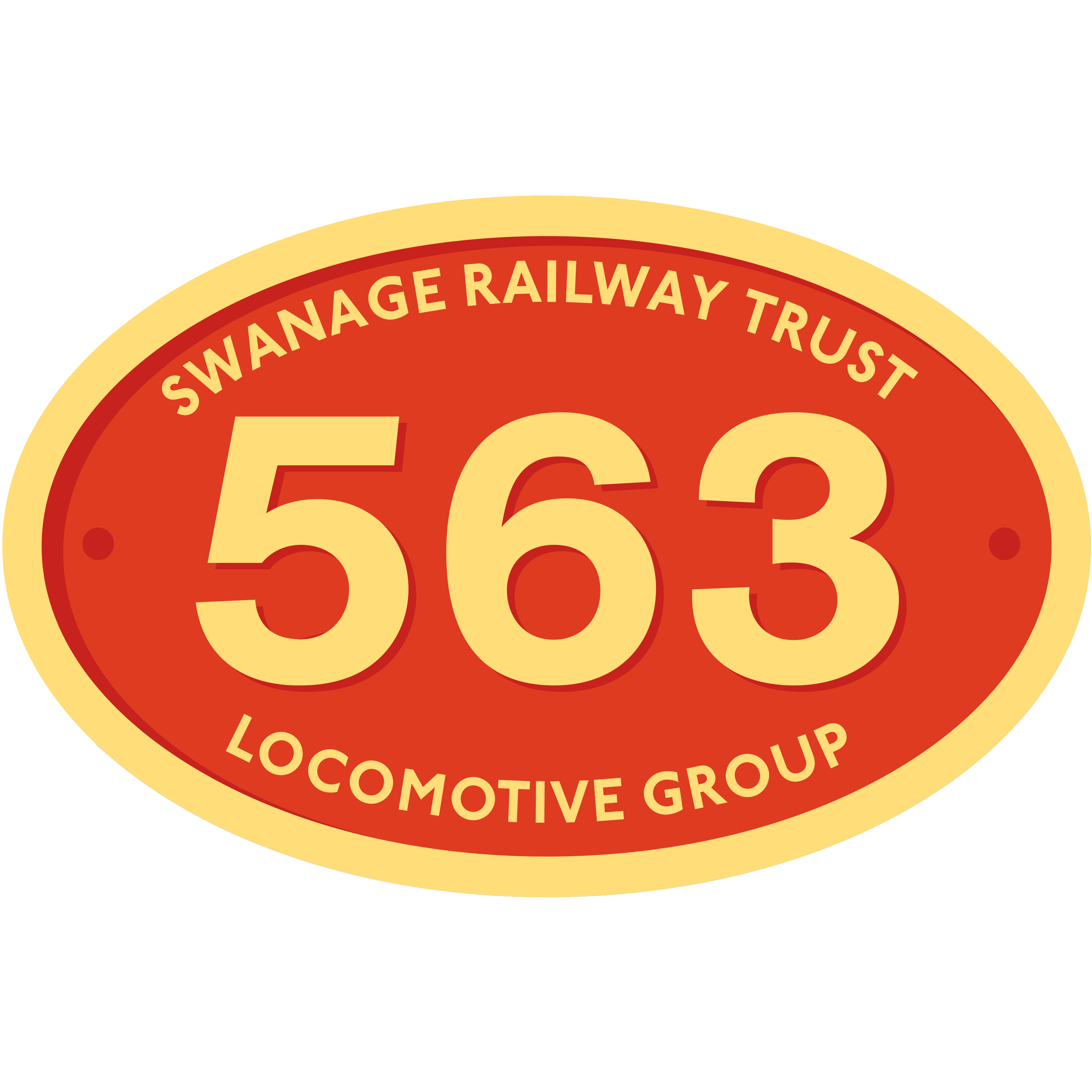The COVID-19 pandemic has affected all aspects of our lives and the T3 project is no exception. However, we are now poised to take a big step forward.
But first some background. When coronavirus first ‘hit’ back in March, the Swanage Railway Trust, of which we are part, was obliged to put almost everything on hold while it considered its options. We all entered lockdown and all work on the locomotive had to stop. Furthermore, the railway quickly realised that it needed to focus all its fundraising attention on survival, especially when it became apparent that much of the summer season would be lost. An ‘SOS’ appeal was launched with a target of £360,000 to cover lost revenue and I’m pleased to say that at the time of writing over £344,020 has been raised. With a combination of help from our suppliers, government grants, loans from our bank (which of course we must repay) and cost-cutting, the Swanage Railway can see a path forward in 2021. Tough times and decisions lie ahead for sure, especially as we cannot predict how long the Covid crisis will endure, but for now the situation has been stabilised such that the Trust has now given the green light (perhaps we should say amber!) for other projects to resume activity and, most importantly, to resume fundraising.
So, where do we stand with the T3? Before we put work on hold, we made every effort to ensure that we would be in a good position when we could restart work in earnest as lead times for components that have to be made can be long – often 6 to 12 months. Most importantly, prior to the first lockdown in March and prior to all spending being stopped, the Trust had authorised the purchase of the copper for the new firebox and its manufacture by the South Devon Railway. This was largely possible thanks to the project being in receipt of a legacy that enabled this significant additional expense to be covered.
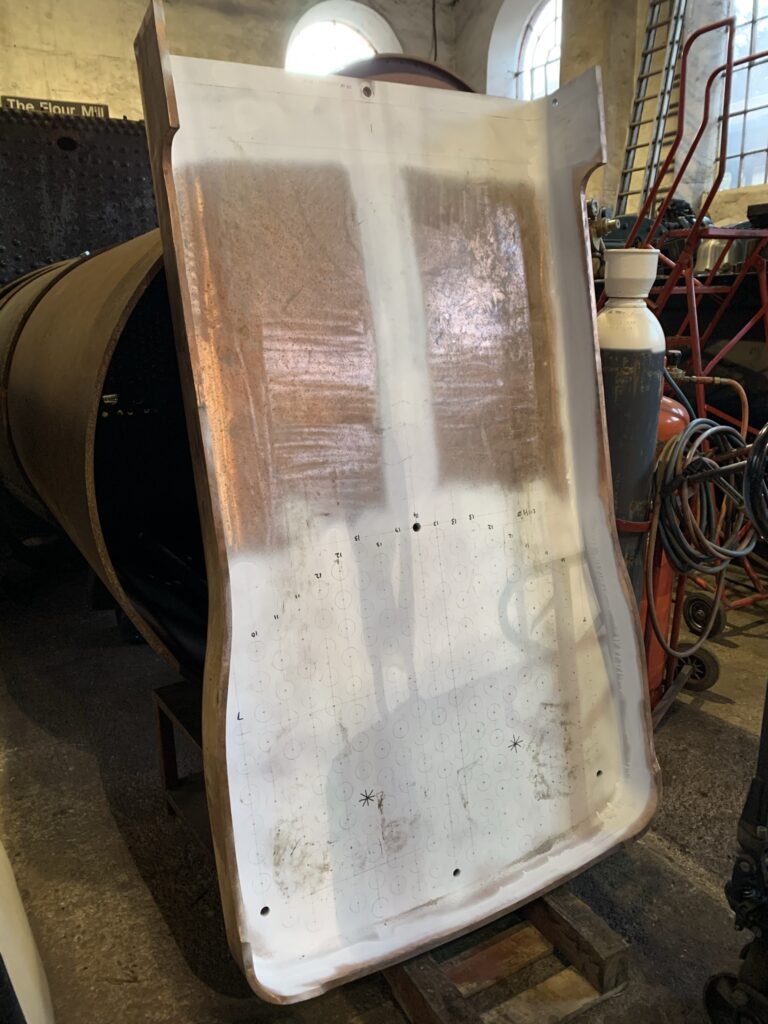
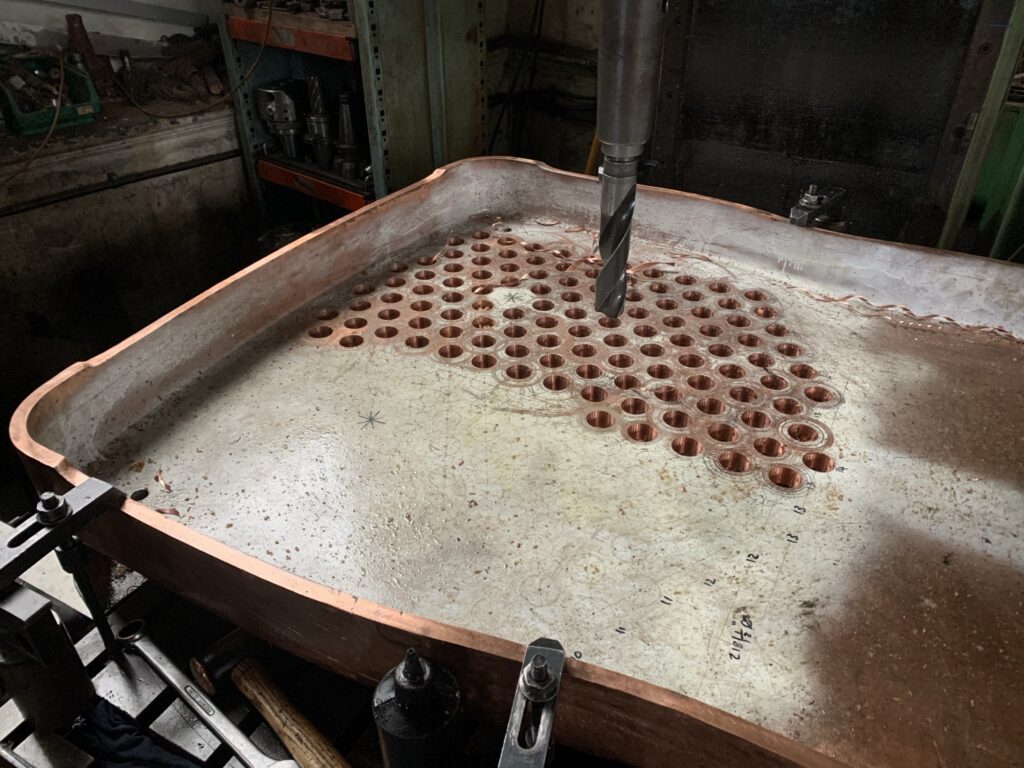
We had also decided that it would be prudent to renew the four firebox girder stays, an investment that should reduce the need for major firebox repairs for many years to come. These are large but quite simple castings (see picture below), but require a lot of machining and, with a 16 week lead time on the casting alone, had the potential to stretch our programme considerably. While the Trust had by this time put all new spending commitments on hold, we were extremely fortunate to receive an offer from one of our supporters to underwrite the cost, such that the order could be placed with the foundry and the project lead-time so protected. So, while we were all ‘on hold’ work on this aspect of the project was quietly proceeding to the extent that the new ‘box’ has now been fabricated. A coded welder was then contracted over the summer to weld the ¾ new steel outer-firebox sides into position. The Flour Mill team then riveted the sides onto the Throat plate and Firehole door plate.
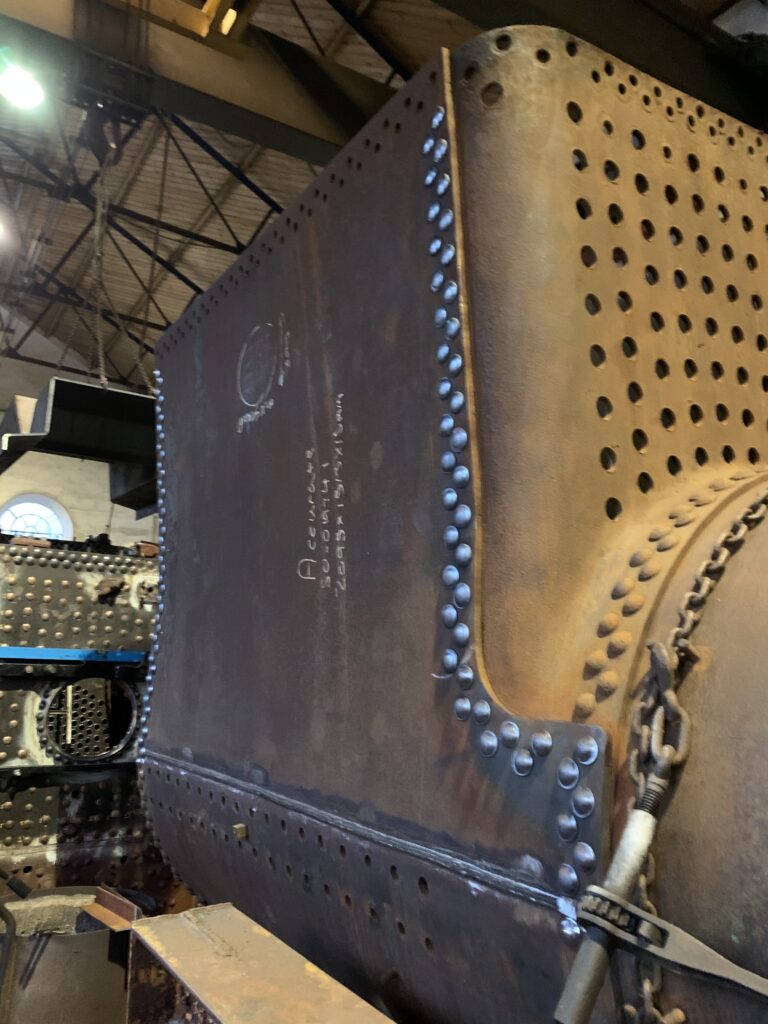
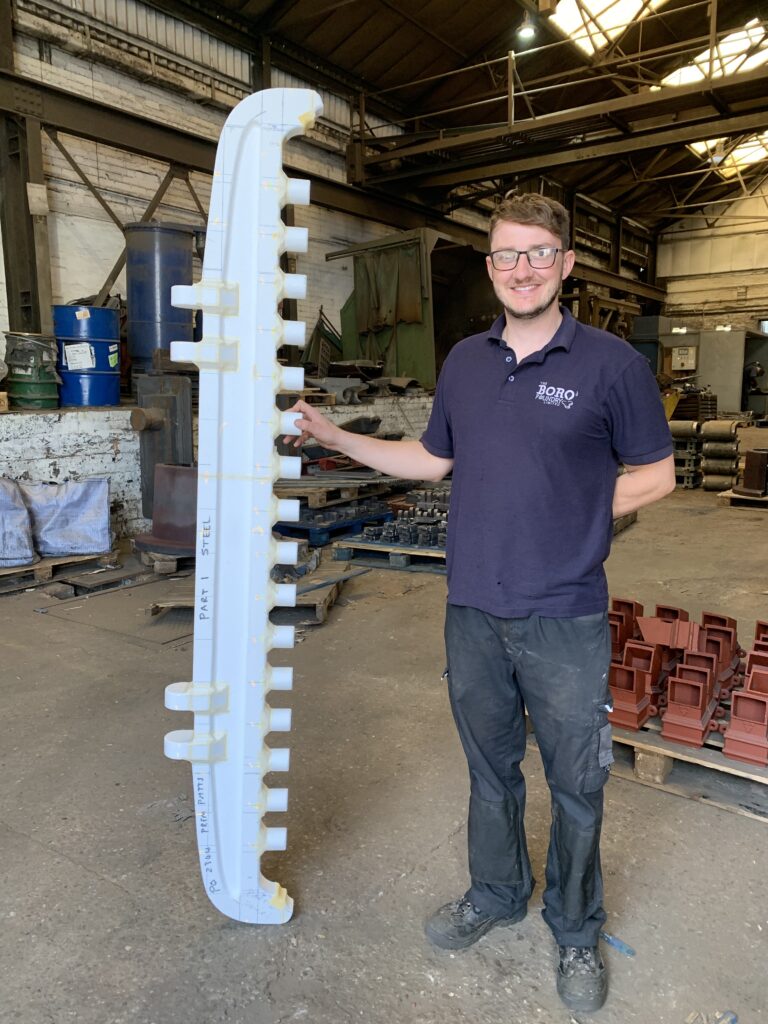
The boiler itself was moved into the main workshop and work slowly commenced on removing the angle ring. The angle ring sits on the front of the barrel and secures the front tubeplate in place. This too was beyond repair due to extensive star cracking around almost all the holes. While this could have been repaired, this would have risked distorting the ring.

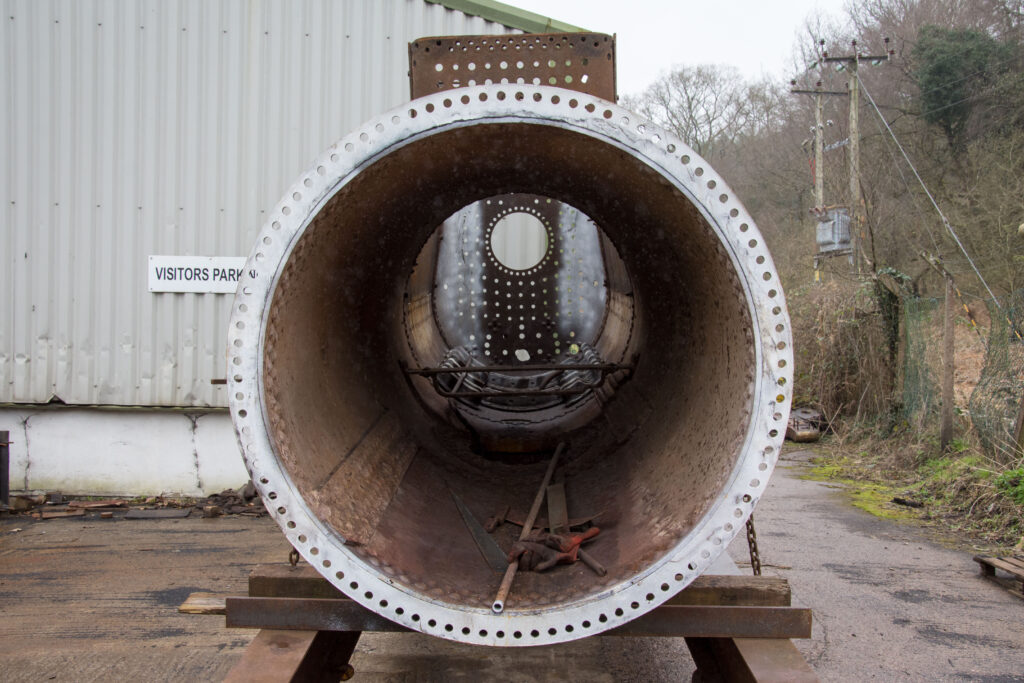
We therefore made the decision to replace this and have ordered a new one from South Africa. Some have asked why South Africa? Well, the company, Ring Rollers, are the world leaders in the manufacture of railway tyres. Almost all heritage railways order their locomotive and coach tyres from South Africa and we decided to see if they would roll us an angle ring. Turns out they could! A generous supporter stepped in once again and underwrote the cost of this as our funds were still out of bounds. Thanks to this generous offer we have been able to step forward with this unexpected, long lead time component.
It is appropriate at this point to express our gratitude to these benefactors, not only for enabling these costs to be covered, but also ensuring that the momentum of the project could be quietly maintained during these difficult times.
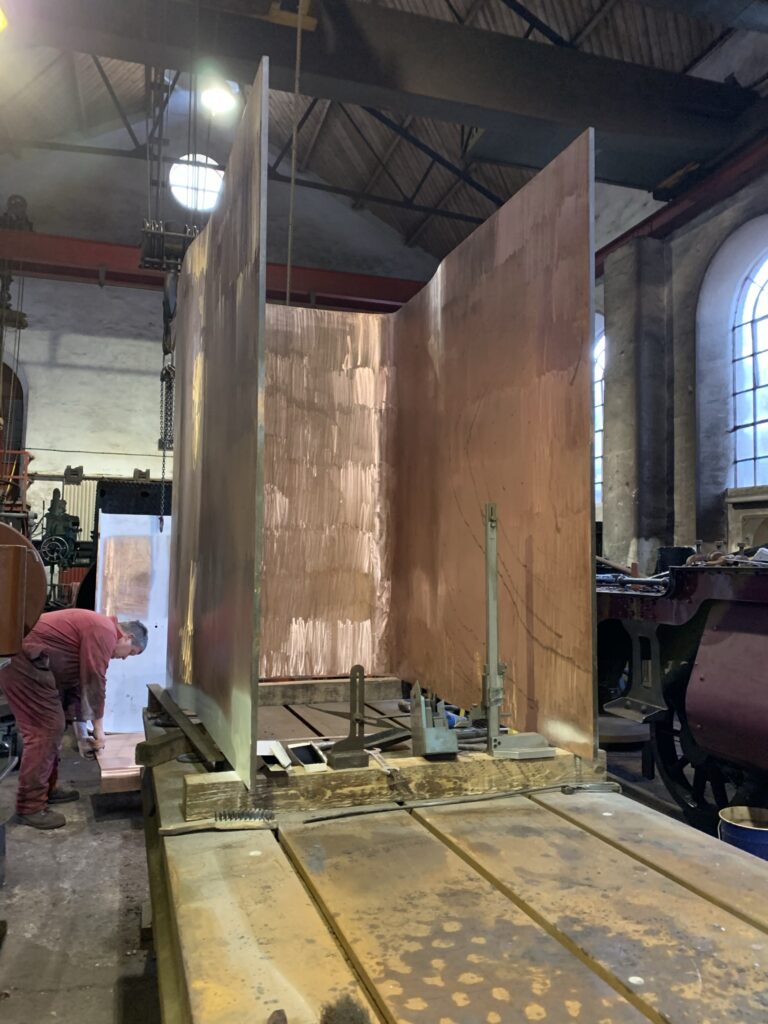
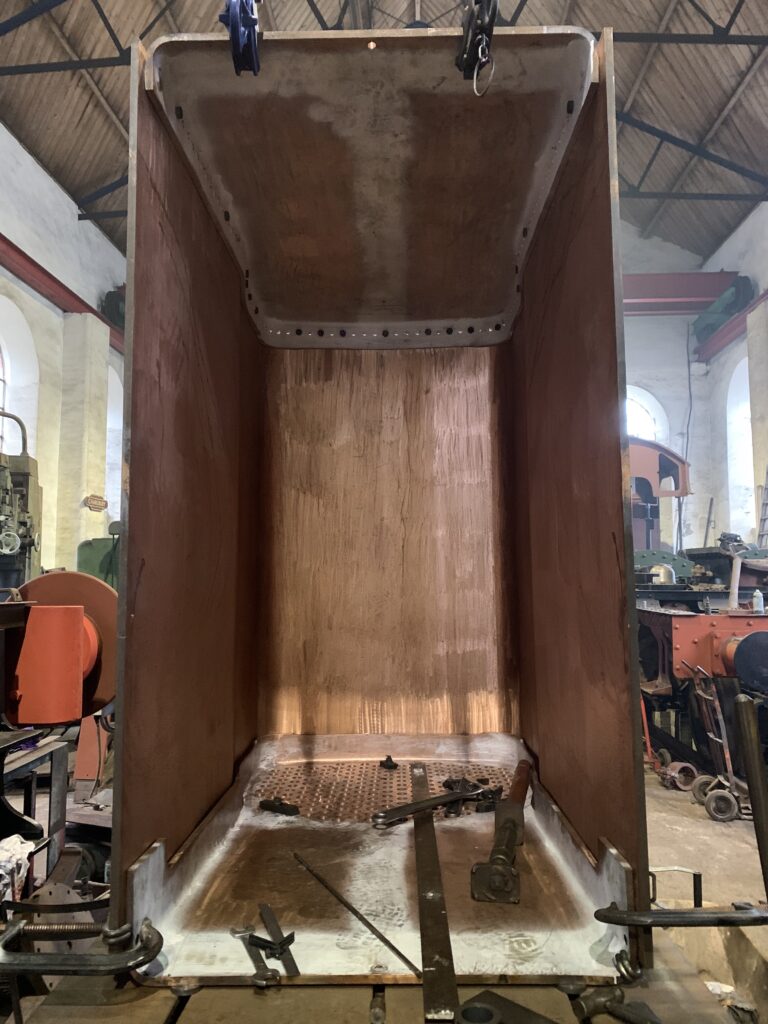
With all manufacturing now complete, the new firebox is now being installed into the boiler structure. The work to replace the inner firebox represents the lion’s share of the work required to the boiler. The T3 is not superheated, so the barrel is relatively simple in design. It is also in good condition so we expect that work to reassemble the whole boiler structure – the heart of the locomotive – will be relatively quick. In the words of Bill Parker of the Flour Mill, ‘once we have the boiler finished, we are past the peak of risk and cost’ with the project. That we are close to such a major milestone is truly exciting, although supporters will not be surprised to learn that the above activity has now consumed all of our available funds. We are still some way from having a finished locomotive – and tender – and further progress is now critically dependent on our ability to raise new funds. To date, over £240,000 has been raised, but a similar sum is still required to complete the project.
As you will not be surprised to hear, the result of not continuing to bang the fundraising drum for the T3 this year has been a significant slowdown in income. We do understand that T3 aside, many people have found the need to review their commitments and direct their support some of the many other worthwhile causes that have been appealing for funds during the pandemic, including our own ‘SOS’ appeal. We now need to get the fundraising drum out again, for the pace of work in recent weeks on the boiler can only continue if we quickly raise new funds. Can you help?
The bottom half of the locomotive – the engine itself – is generally in good condition as many components were overhauled by Eastleigh prior to preservation shortly after the war, so much of what is required is cleaning, checking, reassembly and testing. However, the axle boxes in particular need attention to make them fit for an active rather than static future. Although our priority has been the boiler, the Flour Mill have taken the opportunity to polish the wheelset journals on the lathe and strip the bogie down for overhaul.

The other significant item is the tender. We have not finalised our plans for this yet, as our preferred option of completing this using volunteer labour is dependent on space being available within Herston Works and, inevitably, what Covid restrictions there are. With exception to replacement of cast-iron brake rigging which does not meet current standards for operational use, the work required is relatively straightforward, being mostly renewal of platework, tyre profiling and work to axle boxes. The alternative to using Herston is to contract the task, but as this is estimated to cost around £70,000, we would prefer to avoid this unless a sponsor can be found.
So, how can you help the T3 project? There are a range of options for everyone keen to support the return to steam.
- Continuing or renewing your monthly covenant provides the project with a regular income which is especially valuable as it enables us to make a continuing commitment to fund the restoration with our suppliers. Continuous work helps to ensure that our locomotive does not get side-lined while we wait for funds to build up and potentially have to wait until other projects get completed before work can continue.
- One-off donations. We are of course pleased to accept anything you can spare, but if you would like to identify your donation with a specific task or component, we have the following specific needs:
- 845 stays at £20 each
- 218 tubes at £40 each
- Boiler insulation £500
- Axle box bronze £1000
- Spark arrestor £1000
- New smokebox £5000
If you would like a certificate to record your donation and, if appropriate, the specific component you wish to sponsor just let us know. If you are struggling to think of an unusual present for someone who is passionate about steam, why not give a T3 ‘Give a Gift’ certificate?
We have a continuously evolving list of tasks and components needed to complete the project. If you would like to help in this way, please contact us at 563locomotivegroup@swanagerailway.co.uk
Finally, in response to interest from supporters, we are hoping to offer benefactors who have committed at least £500 to the T3 project the opportunity to visit the Flour Mill to see the exciting progress for themselves. Numbers will however have to be limited as the Flour Mill for health and safety reasons, but we hope that we will over time be able to arrange for everyone to go. We hope to arrange a first visit in the summer, Covid restrictions permitting. Further details will be available in due course, but interested supporters are invited to put their names down now by contacting us at 563locomotivegroup@swanagerailway.co.uk
The timescale for completion of the T3 remains totally dependent on our ability to raise funds, but notwithstanding the impact of Covid restrictions this year, the locomotive could be complete by late 2022 if the money were available. As the only locomotive the Swanage Railway Trust currently owns, we expect No.563 to be one of our flagships in the fleet, with regular opportunities to showcase both itself and the railway with pride. It won’t just be a high days and holiday’s engine so it is extremely important that we don’t scrimp on this overhaul but do all the jobs we can now instead of considering to leave them for a later date. The costs have subsequently risen as a result, but we are still carefully managing our finances to ensure we get maximum value out of every pound we spend. In these difficult times, we hope that the prospect of the T3 returning to steam in the near future is the sort of good news that every steam enthusiast is desperately in need of these days and that you will feel able to help make it happen.
Thank you for your support,
The 563LG Project Team
8th January 2021
